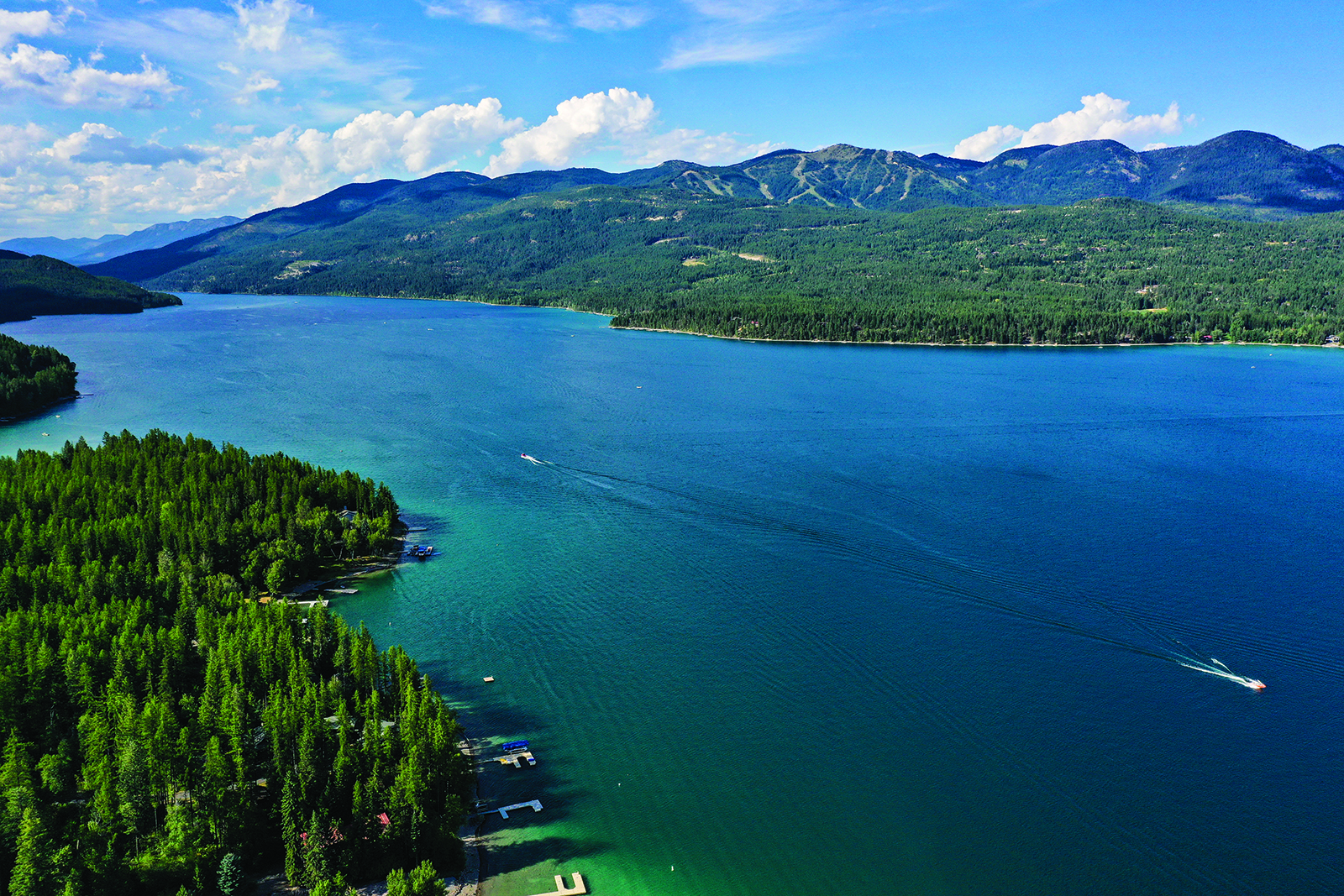Montana Fish, Wildlife and Parks (FWP) and the City of Whitefish on Thursday issued a warning to boaters about dropping lake levels on Whitefish Lake, stating in a press release that public ramps at Whitefish Lake State Park and Whitefish City Beach “are approaching levels that are too shallow to launch or take out large boats.”
The press release also urged landowners with large boats docked on Whitefish Lake to monitor lake levels and consider taking out boats due to dropping lake levels. FWP attributes the dropping water levels in Whitefish Lake and other waterways in northwest Montana to a combination of severe drought conditions, earlier-than-normal spring runoffs, and above-average hot and dry summertime weather.
The Whitefish Lake Institute monitors lake levels using a concrete benchmark near the watercraft inspection station, and executive director Mike Koopal shared on Thursday, Aug. 4 that the lake’s elevation was at 2,996.47 feet. That puts Whitefish Lake at just .51 feet above the record low set in 1988. Earlier this summer, the lake measured its lowest June elevation on record, and Koopal said unless significant rainfall and cooler temperatures arrive, “there is a high likelihood we will break the lowest recorded lake elevation.”
According to data shared by the Whitefish Lake Institute, the average low water elevation at the lake in the 1990s was 2,998.11 feet. That dropped to 2,998.1 feet in the 2000s, and 2,996.79 feet in the 2010s. From 2020 to present the average low water elevation on the lake is 2,996.6 feet.
“Whitefish Lake is an undammed, natural lake subject to fluctuation, and on any given year, the lake can fluctuate about 4 feet from its maximum elevation to its minimum elevation,” Koopal wrote in an email to the Beacon. “Currently we are limited to ‘point-in-time’ survey measurements, and even with our best attempts, it is assumed that the historic data, which date back to the late 1950s, and our more recent measurements, never quite capture the highest of the highs and the lowest of the lows. However, when data is grouped into a yearly analysis averaging the lowest recorded measurement from each year, a statistically significant downward trend of low water elevation is evident.”
Carla Belski, the community services coordinator for City of Whitefish Parks and Recreation, and manager for the aquatic invasive species program at Whitefish City Beach and Whitefish Lake State Park, said the goal of putting out the press release and advisory was to be proactive. Inspectors at both boat launches are letting people know when they launch about the low levels, but Belski said there are some cases where boats are on the water all season, and so owners may not deal with launching and taking out their boats except at the beginning and the end of the season.
As Belski noted, it’s sometimes easier to launch a boat than to get it out, and there isn’t anything the city can do to remedy the situation if a boat is stuck.
“We can’t extend the boat launch — it’s a cement structure. It’s something we could consider in the future if we continue to experience low lake levels, but that would be a capital improvement project,” Belski said.
As for what is considered to be a large boat, she said it’s hard to give an exact definition. Some of that assessment comes down to an owner knowing their boat. But she said generally the concern centers on boats that require transportation on long trailers with double or triple axles, and boats with steep hulls that require more water to launch.
